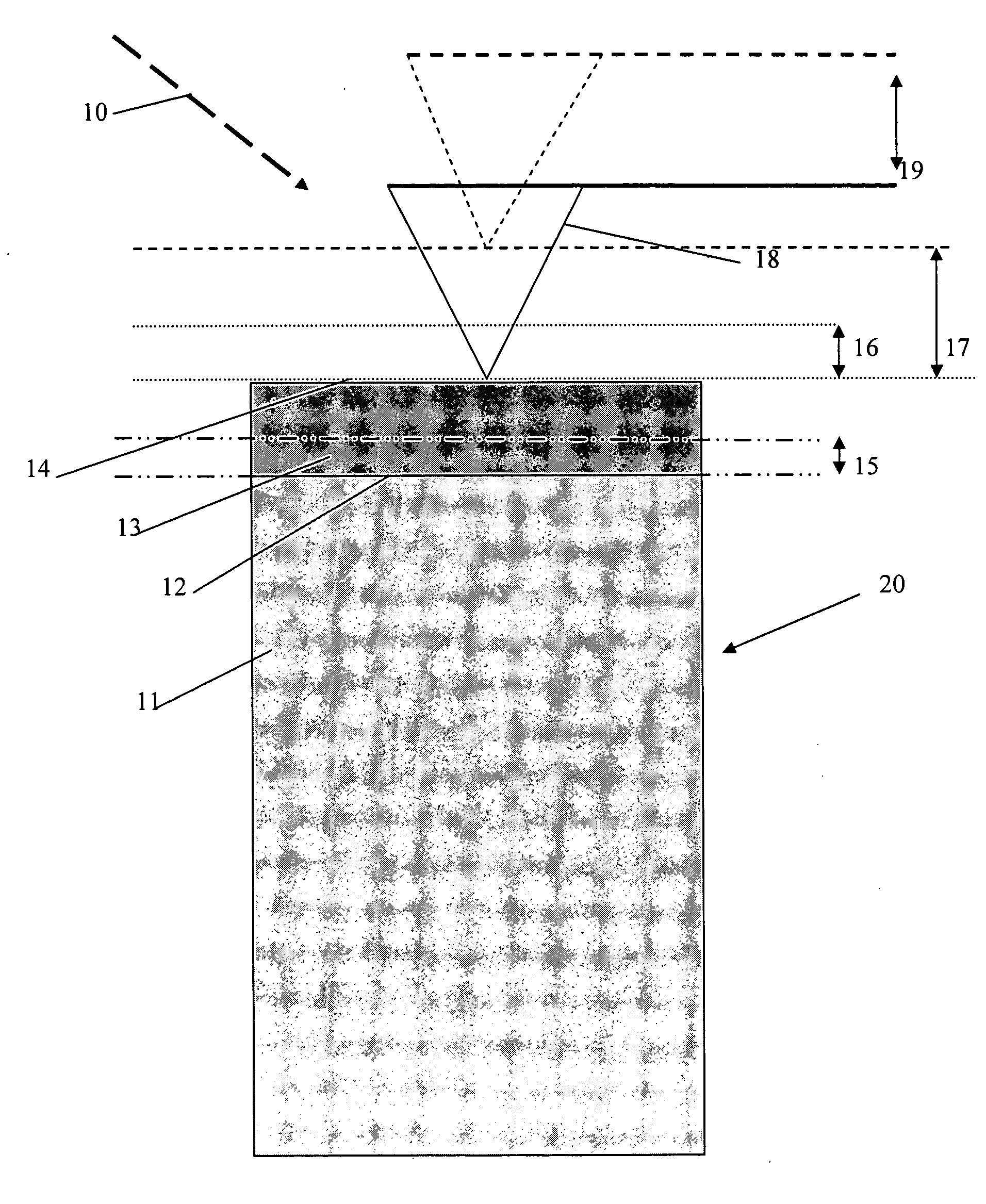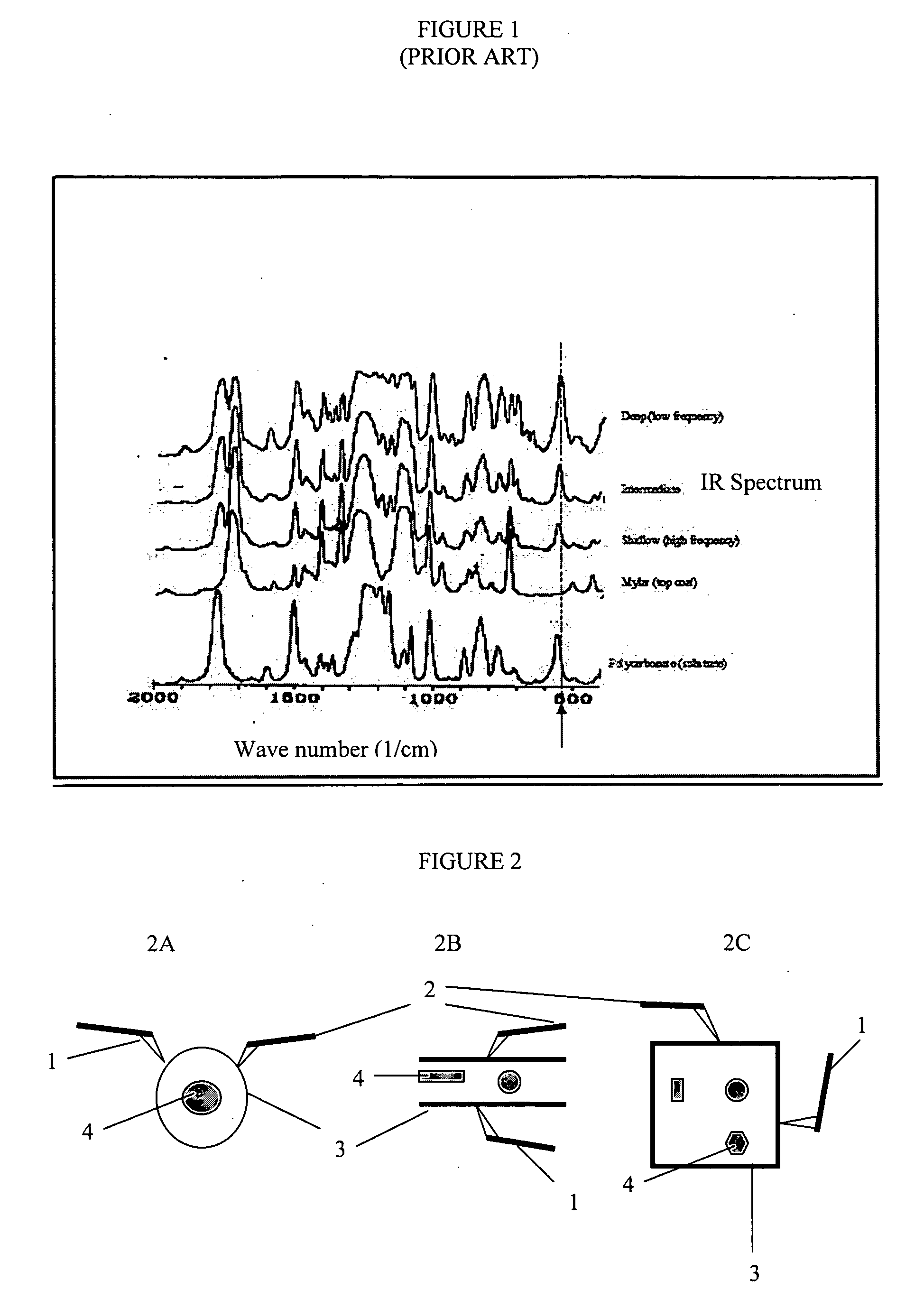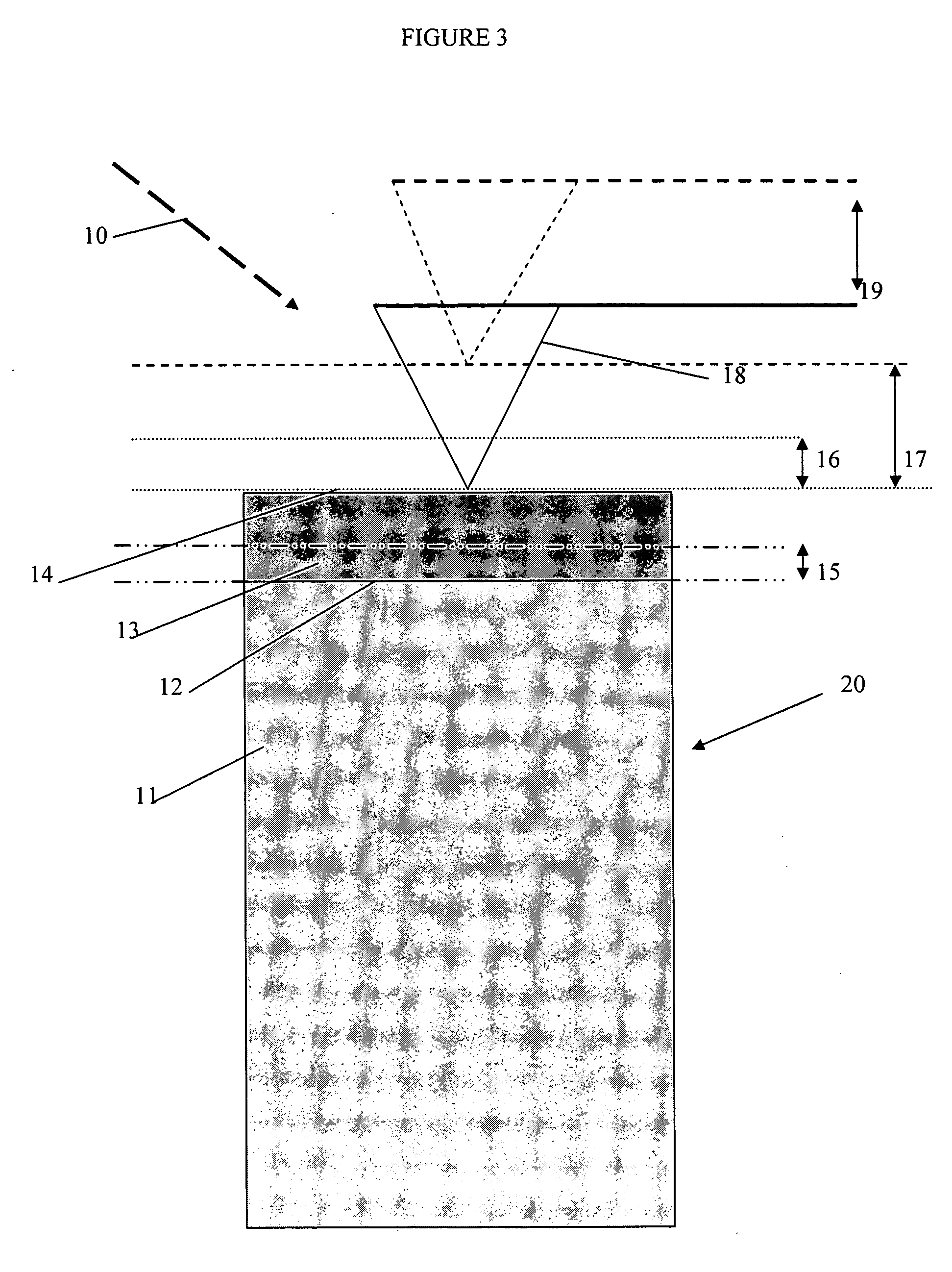Method and apparatus for localized infrared spectrocopy and micro-tomography using a combination of thermal expansion and temperature change measurements
a technology applied in the field of localized infrared spectrocopy and microtomography using a combination of thermal expansion and temperature change measurement, can solve the problems of not being able to achieve high spatial resolution, not being able to teach or suggest multi-dimensional image using multiplicity of modulations at different frequencies
- Summary
- Abstract
- Description
- Claims
- Application Information
AI Technical Summary
Benefits of technology
Problems solved by technology
Method used
Image
Examples
example 1
[0052] Probe 18 is heated with measured amplitude for the temperature modulation of 1° C. at a high modulation frequency at which the thermal diffusion length of the thermal wave is of the order of 0.1 units. The thermal wave does not penetrate much beyond top layer 13 and so the total height increase 17 and the apparent thermal diffusivity is mainly representative of the properties of top layer 13. A second measurement is performed using the heated probe 18 at the same amplitude of temperature modulation at a low frequency at which the thermal diffusion length is of the order of 1 unit. The thermal properties measured are representative of both bottom layer 11 and top layer 13, but mainly representative of the bottom layer 11 because it represents the majority of the material probed by the wave. In the simple case we are considering in this example, the thermal properties of bottom layer 11 and top layer 13 are the same and so the coefficient of thermal expansion and apparent therm...
example 2
[0053] The sample is illuminated by a photothermal radiation 1 of a wavelength that is absorbed by the bottom layer 11 but not the top layer 13 with an intensity that is modulated at the high and low frequencies. The intensity of the radiation 1 is adjusted so that a measured temperature modulation with amplitude of 1° C. is achieved. At the high frequency, the amplitude of the temperature expansion is greater than that observed in example 1, because the amplitude of the temperature modulation in bottom layer 11 required to achieve the 1° C. measured amplitude at the surface is greater than 1° C. because the wave is attenuated by top layer 13 which acts as an insulator. This greater than 1° C. amplitude tends to apply throughout the bottom layer 11 and also means that the measured thermal expansion is larger than in example 1. At the lower frequency, the thermal expansion is similar to that observed in example 1 because the top layer 13 has a much lesser attenuation effect at lower ...
example 3
[0054] The sample is illuminated by a photothermal radiation 1 of a wavelength that is absorbed by the top layer 13 but not by the bottom layer 11. The photothermal radiation is modulated at high and low frequencies. The intensity of the radiation is adjusted so that a measured temperature modulation with amplitude of 1° C. is achieved. At the high frequency, the amplitude of the temperature expansion is be similar to that observed in example 1. At the lower frequency the amplitude of the thermal expansion is similar to that observed in example 1.
[0055] Note that in example 2 at the high frequency, without the data from example 1, the data from example 2 cannot be interpreted easily. We simply observe an expansion and have nothing with which to compare it. With the data from example 1, that provides for a method of estimating the coefficient of thermal expansion, it is concluded that the absorbing layer must be the bottom layer 11. This very simple example illustrates two things:
[...
PUM
| Property | Measurement | Unit |
|---|---|---|
| wavelength | aaaaa | aaaaa |
| temperature | aaaaa | aaaaa |
| temperature | aaaaa | aaaaa |
Abstract
Description
Claims
Application Information
 Login to View More
Login to View More - R&D
- Intellectual Property
- Life Sciences
- Materials
- Tech Scout
- Unparalleled Data Quality
- Higher Quality Content
- 60% Fewer Hallucinations
Browse by: Latest US Patents, China's latest patents, Technical Efficacy Thesaurus, Application Domain, Technology Topic, Popular Technical Reports.
© 2025 PatSnap. All rights reserved.Legal|Privacy policy|Modern Slavery Act Transparency Statement|Sitemap|About US| Contact US: help@patsnap.com



